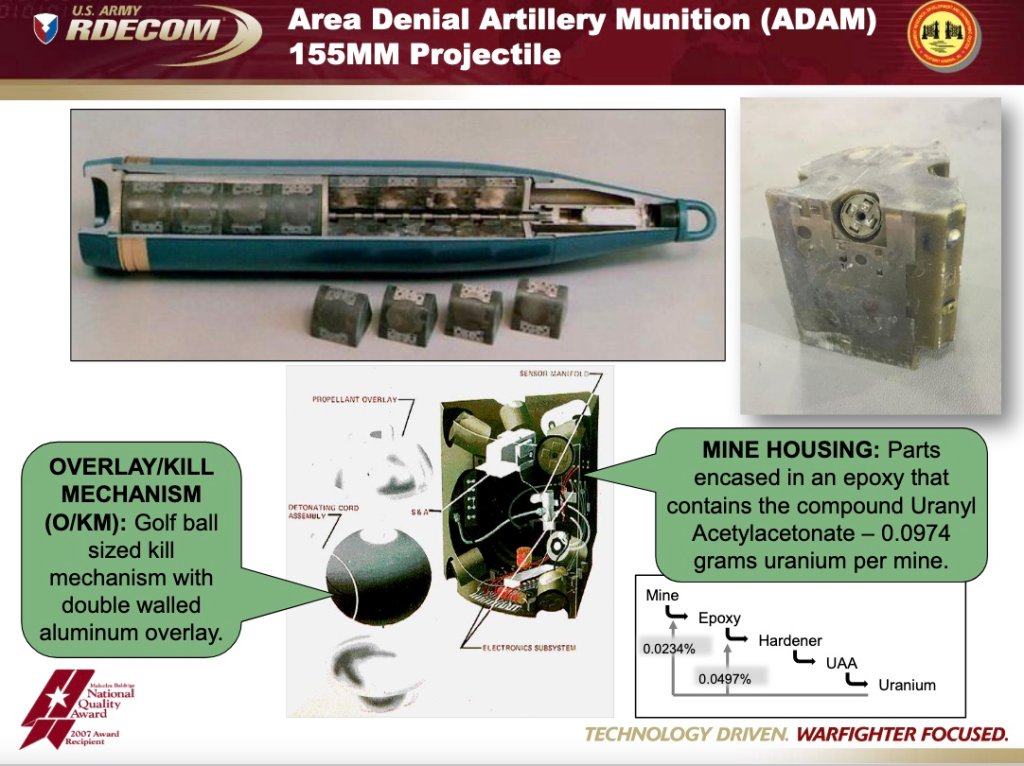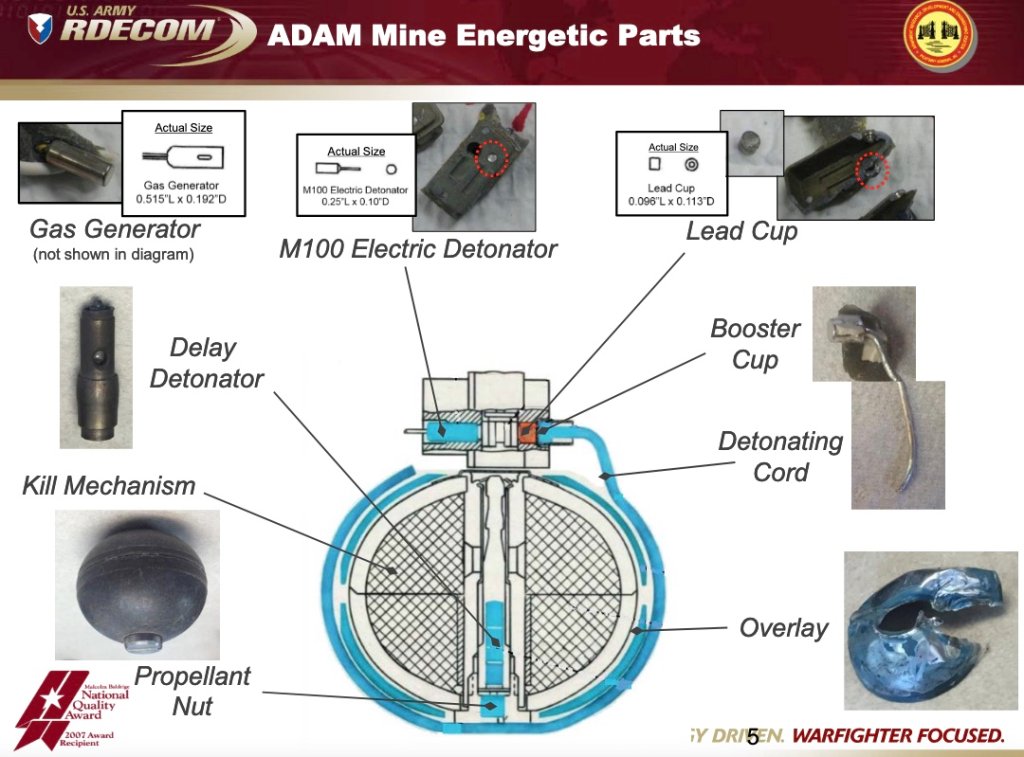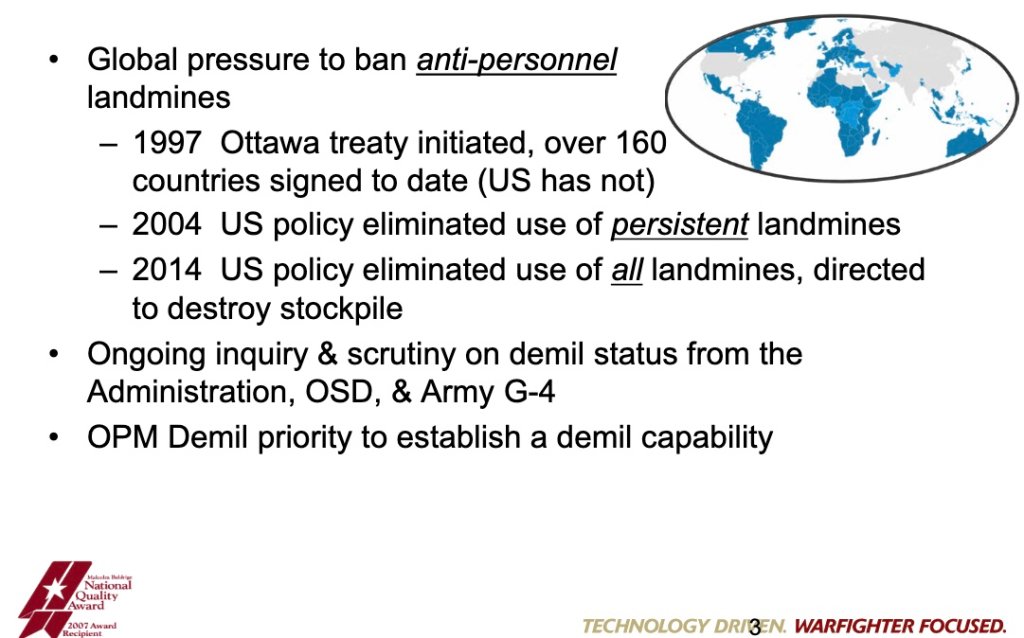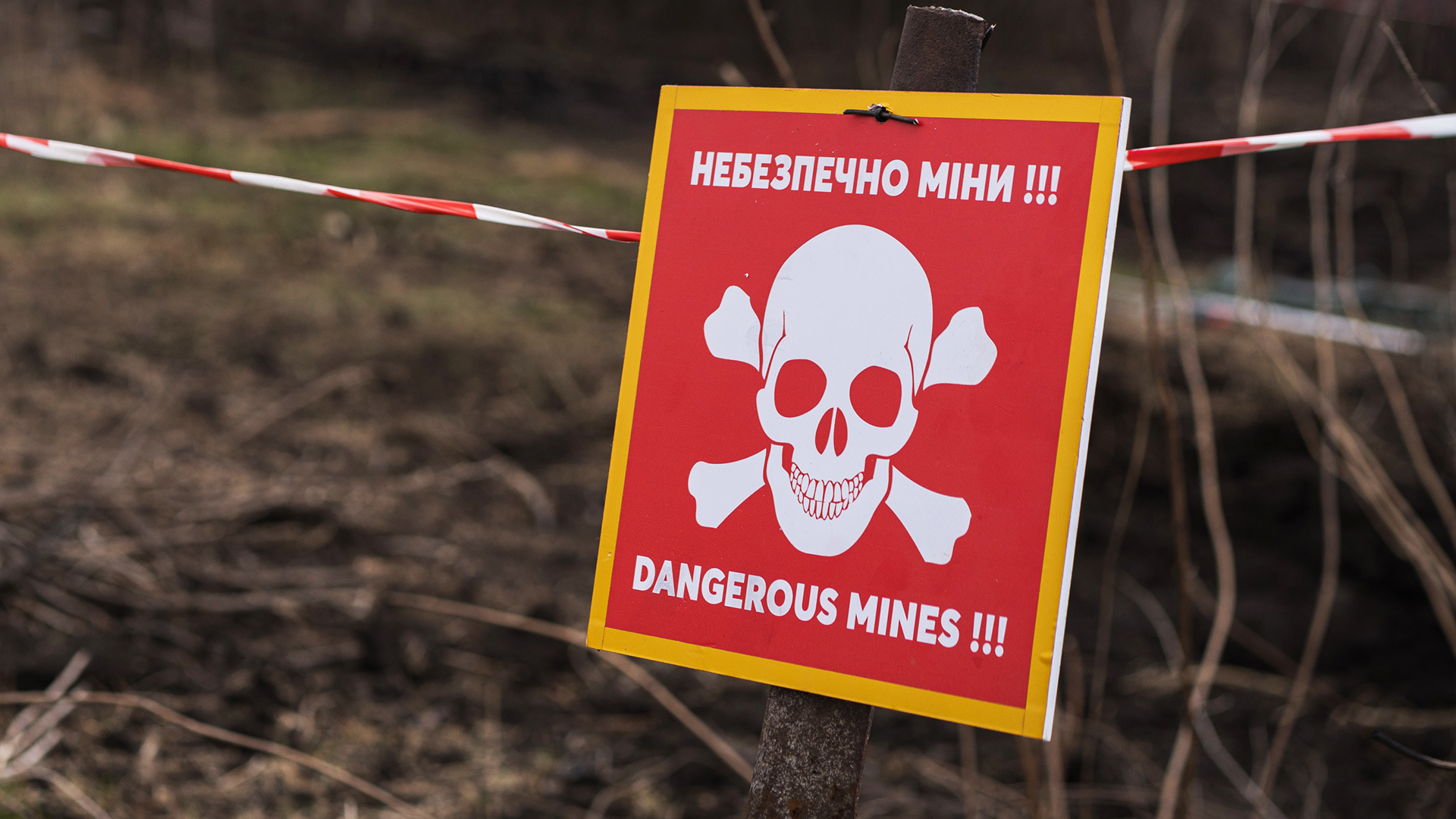The Pentagon on Thursday said that Ukraine will be receiving anti-personnel landmines for the first time as part of the latest tranche of weapons for the embattled nation.
The latest Presidential Drawdown Authority Package (PDA), valued at up to $275 million, was announced Wednesday. It made no specific mention of landmines but included an unspecified amount of 155mm artillery shells. The Pentagon confirmed that the mines are part of the latest PDA. That points to Ukraine likely being given artillery-fired Area Denial-Artillery-Munitions (ADAMs), designed to scatter landmines ahead of, on top of, or behind enemy forces.
Several other indicators point to ADAMs. Ukraine has already received 70,000 of the anti-armor variants of the mine-dispensing shells, has the howitzers needed to fire them which require no new training and nothing else in the package seems to be a match. It is still possible that there is another type of anti-personnel mine capability being given to Ukraine that wasn’t listed, but that seems unlikely based on the factors listed above and Ukraine’s urgent battlefield needs.
155mm ADAM shells come in two flavors, the M692 and M731, which both contain 36 individual mines. The rounds also function in the same way, releasing the mines out of the rear end after reaching a set point in their flight.

Where the M692 and M731 differ is in the specific types of mines inside. The M692 contains M67s, while the M731 has M72. The wedge-shaped mines themselves are only different in the lifespans of their internal batteries – approximately 48 hours for the M67 and just around 4 hours for the M72.
Otherwise, each M67 and M72 “has eight trip wires (four on the top and four on the bottom) that deploy after ground impact up to 12 meters from the mine,” according to Army Field Manual 20-32. “[The] trip wires are similar in appearance to very fine thread; they are olive-drab green in color and weighted at the free end. A tension of 405 grams applied to one trip wire is enough to create a break in the electrical circuit and cause the mine to detonate.”
Each M67 and M72 contains golf ball-sized grenade-like explosive charge designed to “kill enemy soldiers through the combined effects of blast and fragmentation,” per the Army manual. “Shrapnel is propelled upward and outward from the mine and produces fatal casualties to a distance of 15 meters.”
It’s interesting to note that the casing of each M67 and M72 contains just under 0.01 grams of depleted uranium, which is added to the resin blend to help it cure faster and more reliably.

There is a possibility that other U.S. anti-personnel mine types could also be included in the most recent aid package for Ukraine, but not clearly identified. The Gator family of mines, which includes anti-personnel and anti-tank mines that can be dispersed using ground-based launchers and ones installed on helicopters, as well as air-dropped cluster munitions, remains in at least limited U.S. service. Older scatterable mines and methods of emplacing them like the Ground Emplaced Mine Scattering System (GEMSS) could still be held in storage.
The U.S. military also reportedly maintains a stockpile of manually-emplaced anti-personnel mines in South Korea to be used if conflict were to resume on the Peninsula.
Mines in general, and anti-personnel mines especially, are very controversial, particularly due to the threat they potentially pose to civilians long after a conflict is over. The limited battery life of the M67 and M72 mines, as well as Gator mines, is intended to reduce that threat but does not inert the explosives inside the mines, which can still present a serious hazard.
The 1997 Ottowa Treaty bans the stockpiling and use of anti-personnel mines, but neither the United States nor Russia is a signatory. Ukraine is a party to the agreement. However, as of 2022, the official position of the U.S. government has been to “align … policy and practice with key provisions of the Ottawa Convention for all activities outside the context of the Korean peninsula.”

The decision to provide ADAMs to Ukraine was made to counter Russia’s so-called “meat assaults” – massive waves of personnel attacking positions. These attacks have been taking place for years, but especially so now in eastern Ukraine and Russia’s Kursk region. Though Russia has been slowly gaining ground this way, it has come at an incredibly high cost in terms of personnel and equipment losses.
Ukraine needs weapons that can blunt these advances, said U.S. Defense Secretary Lloyd Austin.
“What we’ve seen most recently is because the Russians have been so unsuccessful in the way that they have been fighting they’ve kind of changed their tactics a bit and they don’t lead with their mechanized forces anymore,” Austin told reporters in Laos on Wednesday. “They lead with dismounted forces who are able to close in and do things to kind of pave the way for mechanized forces.”
Ukraine “has a need for things that can help slow down that effort on the part of the Russians,” he posited. You can see the results of one of those “meat waves” in the video below.
While the Ukrainians are making their own landmines, Austin pointed out that those provided by the U.S. are what’s called “non-persistent,” meaning that in theory, they make themselves inoperable in a certain amount of time, making them safer than what Ukrainians are making on their own.
Austin insisted that Ukraine has promised to be “responsible” with these weapons, which are only to be used on Ukrainian soil. He noted that the U.S. has already provided Remote Anti-Armor Mine System (RAAMs) projectiles, which are the anti-tank variant of these munitions. In addition to more than three million conventional 155mm artillery rounds, the U.S. has shipped more than 70,000 RAAMs to Ukraine, according to the Pentagon’s latest statistics.
“We’ve talked to them about how they would potentially employ these weapons and make sure that they’re doing things responsibly – recording where they’re putting their mines and making sure that they take advantage of the self-detonating qualities of these weapons.”

The U.S., however, will have limited oversight in how Ukraine deploys the ADAMs, the Pentagon’s Deputy Press Secretary told reporters, including from The War Zone, Thursday afternoon.
“We’re not tracking it in terms of where they place them, but certainly they have given us their assurances that they will be employed in a way that protects civilians,” Sabrina Singh explained. “They have committed that they’re going to use these mines in their own territory. And I should have added that they’re not going to use them in populated areas.”
Ukrainians have an interest in scattering these landmines as safely as possible, Singh noted.
After the war, Ukraine “is going to have to conduct a massive demining effort …to remove any unexploded ordinance, both from the landmines that Russia has put in place, and also to any anything else that has been used on the battlefield.”
They are already doing this even under heavy Russian pressure along much of the battlefield, which includes large swaths of land littered with Russian mines. During Ukraine’s failed 2023 counteroffensive, President Volodymyr Zelensky said 200,000 sq km (77,220 sq miles) of Ukrainian territory had been mined by Russian forces, slowing down advances.
“We’ve already seen them conduct this type of operation in some of the territory that they’ve recaptured,” Singh pointed out. “The U.S. is committed to supporting them and to helping them with what they need in those key mining efforts.”
As we recently noted, last month was the deadliest of the war for Russia, according to the U.K. Defense Intelligence Directorate.
The average daily number of Russian troops killed and wounded was 1,354, it stated, citing Ukrainian Armed Forces General Staff statistics. For the month, there were 41,900 casualties, eclipsing the previous record of 39,100 from May. November is off to an even bloodier start, with an average of 1,498 killed and wounded as of Nov. 12.
All told, Russia has lost upwards of 700,000 killed and wounded, those statistics show.
It’s worth noting that casualty numbers vary widely depending on the source and The War Zone cannot independently verify them.
These casualty figures offer an indication of Russia’s tolerance for the loss of troops and its willingness to sacrifice them to meet its battlefield goals. That has placed an enormous burden on outmanned Ukrainian troops.
With this in mind, the objective of providing ADAMs to Ukraine is to add to Russia’s mounting casualty count, reduce its forces’ ability to freely maneuver, and to slow what has been in some areas a grinding advance. All of this would assist in reducing the pressure the Russian military is applying at flashpoints along the front lines. With Donald Trump coming into office in two months, some form of negotiations are very likely approaching. Every inch Ukraine loses now it is unlikely to get back if a perspective deal includes freezing the lines where they are, as many believe it would.
Still, the move to supply anti-personnel mines to the Ukraine is an unprecedented one for the U.S. and underlines the precarious state of the conflict.
Contact the author: howard@thewarzone.com
